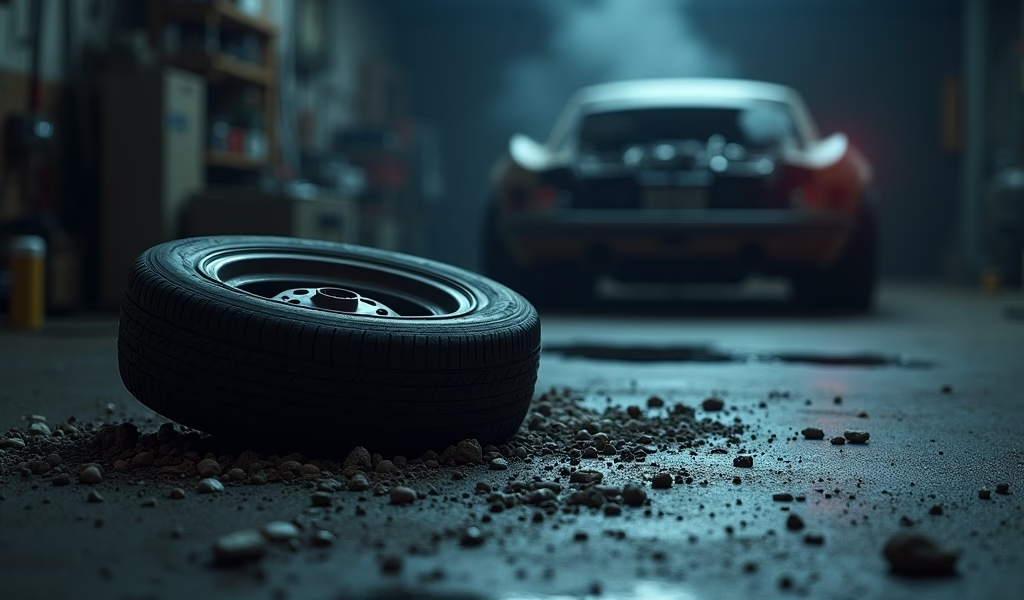Overview
This article presents five professional-grade car maintenance techniques for enthusiasts: using silicone spray for component protection, DIY engine bay cleaning with household items, optimized oil change procedures, proper brake system maintenance, and advanced tire care strategies. These methods not only extend vehicle lifespan and improve performance but also foster a deeper connection between enthusiasts and their vehicles through meticulous, knowledgeable care.
Table of Contents
- Introduction to DIY Car Maintenance for Enthusiasts
- Hack #1: The Silicone Spray Secret for Multiple Components
- Hack #2: DIY Engine Bay Detailing with Household Items
- Hack #3: Optimized Oil Change Techniques for Peak Performance
- Hack #4: Brake System Maintenance Like the Pros
- Hack #5: Smart Tire Care Beyond the Basics
- Conclusion: Elevating Your Maintenance Game
- Frequently Asked Questions
Introduction to DIY Car Maintenance for Enthusiasts
For true car enthusiasts, a vehicle isn’t just transportation—it’s a passion project, a weekend companion, and sometimes, a lifelong relationship. I’ve spent over 20 years working on everything from classic muscle cars to modern turbocharged marvels, and I’ve learned that proper maintenance is what separates the enthusiasts from the everyday drivers. The difference lies not in expensive equipment or exotic products, but in knowing the right techniques that professional mechanics use daily. Throughout my career at the shop, I’ve collected maintenance hacks that can transform how you care for your pride and joy, saving you time, money, and those frustrating trips to the mechanic for issues you could have prevented or fixed yourself. Additionally, these techniques often result in better performance, extended vehicle life, and the satisfaction that comes from truly understanding your machine.
What many car enthusiasts don’t realize is that about 70% of vehicle issues can be prevented with proper maintenance techniques, according to AAA’s vehicle maintenance statistics. Moreover, the average driver who implements professional-grade maintenance can extend their vehicle’s lifespan by up to 50% compared to those who stick to basic scheduled service. These hacks aren’t just about keeping your car running—they’re about optimizing performance, preserving value, and developing a deeper connection with your vehicle. Whether you’re tinkering with a weekend project car or maintaining your daily driver with enthusiast-level care, these five maintenance hacks will revolutionize your approach to vehicle care.
Hack #1: The Silicone Spray Secret for Multiple Components
Professional mechanics rarely reach for WD-40 when maintaining critical components—instead, we grab silicone spray, the versatile wonder product that’s transformative for numerous vehicle systems. Unlike petroleum-based lubricants that attract dirt and can damage rubber components over time, silicone spray creates a clean, protective barrier that’s safe on virtually all materials including rubber, plastic, metal, and vinyl. I’ve personally used high-quality silicone spray to silence squeaky door hinges, rejuvenate weatherstripping, and even protect electrical connections from moisture in vehicles that have traveled over 300,000 miles without electrical issues. Furthermore, applying it to rubber door seals every few months prevents them from freezing shut during winter and from drying out and cracking during summer heat.
The application technique is crucial for maximizing effectiveness—always spray onto a microfiber cloth first, then apply to the component rather than spraying directly, which prevents overspray and waste. For weatherstripping maintenance, apply a light coating every 3-4 months, which not only prevents premature aging but also maintains that satisfying solid door closure sound that car enthusiasts appreciate. Additionally, use silicone spray on window tracks and sunroof guides to maintain smooth operation without attracting the dust and dirt that thicker lubricants would. Many professional detailers also use silicone spray on dashboard components and trim pieces to provide UV protection while maintaining a factory-fresh appearance without the greasy shine of inferior products.
What separates this hack from common knowledge is the application to less obvious components—I’ve saved customers hundreds by using silicone spray on throttle linkages and accelerator pedal mechanisms to eliminate sticking issues they thought required part replacement. The key is consistency: make silicone spray part of your quarterly maintenance routine, especially focusing on components that experience friction or exposure to the elements. By implementing this simple hack, you’re adopting a preventative approach to vehicle maintenance that preserves functionality while avoiding the premature wear that plagues neglected vehicles.
Hack #2: DIY Engine Bay Detailing with Household Items

A clean engine bay isn’t just about aesthetics—it’s crucial for spotting potential issues before they become expensive problems. Many car enthusiasts mistakenly believe engine cleaning requires specialized chemicals or professional service, but I’ve developed a safe, effective method using common household items that rivals professional detailing results. The secret lies in a mixture of 1 part distilled white vinegar to 3 parts warm water with a few drops of dish soap—this combination cuts through oil and grease without damaging sensitive components or harming the environment. Before beginning, ensure the engine is completely cool and cover electrical components, the alternator, and the air intake with plastic bags secured with rubber bands.
The application process makes all the difference—use a spray bottle to apply the solution to dirty areas, then agitate with soft detailing brushes rather than abrasive scrubbing. For particularly stubborn grime in hard-to-reach areas, I recommend using an old toothbrush dipped in baking soda paste for gentle abrasive action without risk of scratching or damage. Moreover, compressed air (even from a bicycle pump in a pinch) works wonders for blowing out debris from crevices where moisture shouldn’t remain. After cleaning, allow the engine bay to air dry completely before starting the vehicle, or use compressed air to speed the process for critical components.
What truly elevates this hack to professional status is the final step—after cleaning and drying, apply a thin layer of 303 Aerospace Protectant or similar UV-protective dressing to plastic and rubber components using a microfiber applicator. This not only restores the factory appearance but also prevents future cracking and deterioration from heat and UV exposure. Furthermore, this entire process typically takes less than an hour yet provides the perfect opportunity to inspect hoses, belts, and electrical connections for signs of wear that might otherwise go unnoticed. Implementing this cleaning routine quarterly helps prevent corrosion on metal components and extends the life of plastic and rubber parts, particularly in regions with harsh weather conditions or road salt exposure.
Hack #3: Optimized Oil Change Techniques for Peak Performance
While most car enthusiasts understand the importance of regular oil changes, few implement the professional techniques that maximize engine protection and performance. After performing thousands of oil changes over my career, I’ve refined a method that extracts significantly more old oil than standard procedures, resulting in better engine protection and performance. The cornerstone of this technique is proper engine pre-conditioning—run the engine for approximately 5 minutes before changing the oil to achieve optimal operating temperature which reduces oil viscosity without making components dangerously hot to touch. Additionally, park on a level surface and allow the engine to sit for 10-15 minutes after warming up, allowing oil to drain from the upper engine components back to the oil pan.
The extraction technique makes a substantial difference—after removing the drain plug, allow gravity to do its work for a full 15 minutes rather than the 5 minutes most quick-change places wait. This patience extracts up to 15% more contaminated oil that would otherwise remain in engine crevices and mix with your fresh oil. Furthermore, I always remove and properly clean the oil pan magnetic drain plug (if equipped) to inspect for metal particles that could indicate internal engine wear requiring attention. Before installing the new filter, I use a professional trick of pre-filling it with fresh oil and lubricating the gasket with a thin film of new oil—this prevents dry starts and ensures immediate oil pressure upon engine restart.
The quality of oil and filter selection is where enthusiasts should never compromise—synthetic oils with the proper viscosity rating for your specific engine design provide superior protection, especially for turbocharged engines or those subjected to performance driving. According to research from the Society of Automotive Engineers, extended-performance synthetic oils maintain their protective properties up to 15,000 miles in modern engines under normal driving conditions. However, for enthusiasts who drive aggressively or track their vehicles, I still recommend more frequent changes (every 3,000-5,000 miles) regardless of oil type, as these driving conditions generate more contaminants and subject oil to higher temperatures. By implementing these professional-grade oil change techniques, you’re providing your engine with significantly better protection than standard methods, potentially extending engine life by tens of thousands of miles.
Hack #4: Brake System Maintenance Like the Pros
Brake system maintenance separates casual owners from serious car enthusiasts, with proper techniques delivering both safety benefits and enhanced performance. Throughout my career, I’ve developed a comprehensive brake maintenance protocol that goes far beyond the typical pad replacement, focusing on system-wide optimization. The foundation of professional-grade brake maintenance is proper fluid management—I recommend testing your brake fluid’s condition using test strips that measure copper content, which indicates corrosion within the system. Fluid with more than 200 ppm copper content should be completely flushed, not just topped off, as deteriorated fluid can damage expensive components like the ABS module while reducing braking performance.
When performing brake service, cleaning and proper lubrication of caliper sliding pins and pads is critical yet often overlooked. I use ceramic brake grease specifically formulated to withstand extreme temperatures on caliper pins, hardware contact points, and the backs of pads (never on the friction material). This prevents the squealing and uneven wear that plagues improperly maintained systems. Additionally, for car enthusiasts who value optimal performance, cleaning the caliper mounting brackets with a wire brush and applying anti-seize compound to the bolts ensures proper torque settings and prevents the seized hardware that can make future maintenance difficult.
The true professional approach includes properly bedding in new brake pads—a procedure many enthusiasts skip but is crucial for optimal performance and longevity. After installation, perform 8-10 moderate stops from 35 mph to 5 mph with approximately 30 seconds of cooling between each stop, avoiding coming to a complete standstill which can transfer pad material unevenly. Subsequently, complete 2-3 harder stops from 55 mph to 15 mph, then drive normally without stopping completely for about 10 minutes to properly cool the system. This procedure properly transfers pad material to the rotor surface, preventing the vibration and noise issues common with improper break-in. Implementing these advanced braking techniques delivers more consistent pedal feel, improved stopping power, and extended component life that distinguishes a properly maintained enthusiast vehicle from an average daily driver.
Hack #5: Smart Tire Care Beyond the Basics

Proper tire maintenance is perhaps the most underappreciated aspect of vehicle care among car enthusiasts, yet it dramatically impacts performance, safety, and long-term costs. After decades in professional garages, I’ve developed tire care techniques that extend beyond the basics of pressure checks and rotations. The cornerstone of professional tire maintenance is precision inflation adjusted for actual driving conditions—I recommend checking pressure when tires are cold and setting it 2-3 PSI higher than manufacturer specifications for enthusiastic driving that generates higher tire temperatures. Furthermore, seasonal adjustment is crucial but often overlooked—decrease pressure by 1-2 PSI in extremely hot weather and increase by 2-3 PSI in cold conditions to maintain optimal contact patch and handling characteristics.
Tire rotation should be performed with a specific strategy rather than the basic front-to-back approach many shops use. For performance-oriented vehicles, I implement a modified rotation pattern that accounts for the specific suspension geometry and weight distribution of the vehicle. Additionally, recording tire rotation information including date, mileage, and tread depth measurements at multiple points across each tire creates valuable data that reveals alignment issues before they cause premature wear. According to Tire Rack’s technical research, proper rotation and inflation alone can extend tire life by up to 20% while maintaining consistent handling characteristics throughout the tire’s usable life.
The professional-grade approach includes periodic cleaning and conditioning of tire sidewalls with water-based protectants rather than petroleum-based products which can accelerate rubber deterioration. More importantly, I teach enthusiasts to properly read tire wear patterns—center wear indicates overinflation, edge wear suggests underinflation, while scalloped or cupped wear patterns reveal suspension issues requiring attention. For serious performance enthusiasts, I recommend measuring and recording tire temperatures across the tread face immediately after spirited driving using an infrared thermometer—this reveals pressure and alignment adjustments needed for optimal grip and longevity. By implementing these advanced tire care techniques, car enthusiasts not only save considerably on replacement costs but also experience consistently optimal handling and safety throughout the tire’s extended lifespan.
Conclusion: Elevating Your Maintenance Game
As we’ve explored these five professional-grade maintenance hacks, it’s clear that true car enthusiasts approach vehicle care with precision, patience, and passion that goes far beyond basic ownership. The silicone spray technique preserves critical components often overlooked in standard maintenance, while DIY engine bay detailing combines cleanliness with crucial preventative inspection. Additionally, implementing optimized oil change procedures, professional brake maintenance techniques, and advanced tire care strategies transforms your maintenance routine from basic upkeep to performance optimization.
Throughout my decades working with vehicles, I’ve witnessed firsthand how these techniques not only extend vehicle life but enhance the driving experience in ways that connect enthusiasts more deeply with their machines. The satisfaction of hearing that perfect engine note, feeling responsive brakes, and experiencing precise handling becomes the reward for your methodical care. Moreover, these maintenance hacks build confidence and competence that changes your relationship with your vehicle from dependence on others to self-reliance and understanding.
Remember that consistency is the key differentiator between casual owners and true car enthusiasts. By incorporating these five maintenance hacks into your regular routine, you’re not just maintaining a vehicle—you’re preserving its performance potential, extending its usable life, and deepening your connection to the driving experience. Whether you’re preserving a classic, maintaining a modern performance vehicle, or simply bringing enthusiast-level care to your daily driver, these techniques represent the difference between ordinary maintenance and the meticulous attention that defines true car enthusiasm.
Frequently Asked Questions
How often should car enthusiasts detail their engine bay?
For optimal results, detail your engine bay quarterly or every 3,000-5,000 miles. More frequent cleaning is recommended in regions with harsh weather conditions or if you regularly drive on dirt roads.
What’s the best time to perform tire maintenance for car enthusiasts?
Check tire pressure monthly and before any performance driving or long trips. Complete rotation and inspection every 5,000-7,000 miles depending on your driving style and vehicle specifications.
Can silicone spray damage any vehicle components?
Silicone spray is safe for virtually all vehicle materials when properly applied, but should be kept away from brake rotors, pads, and clutch components. Always apply to a cloth first rather than spraying directly on sensitive electronics.
How can car enthusiasts tell if their brake fluid needs replacement?
Test brake fluid with copper content test strips – readings above 200ppm indicate replacement is needed. Alternatively, fluid that appears dark amber rather than light honey color should be replaced regardless of mileage.
What’s the biggest mistake car enthusiasts make with oil changes?
The biggest mistake is rushing the drain process and not allowing old oil to fully evacuate from the engine. Allow at least 15 minutes of drain time for maximum contaminated oil extraction before installing the fresh oil.


Pingback: Newest Car Brands: 7 Essential Care Tips - knowsyourcar.com